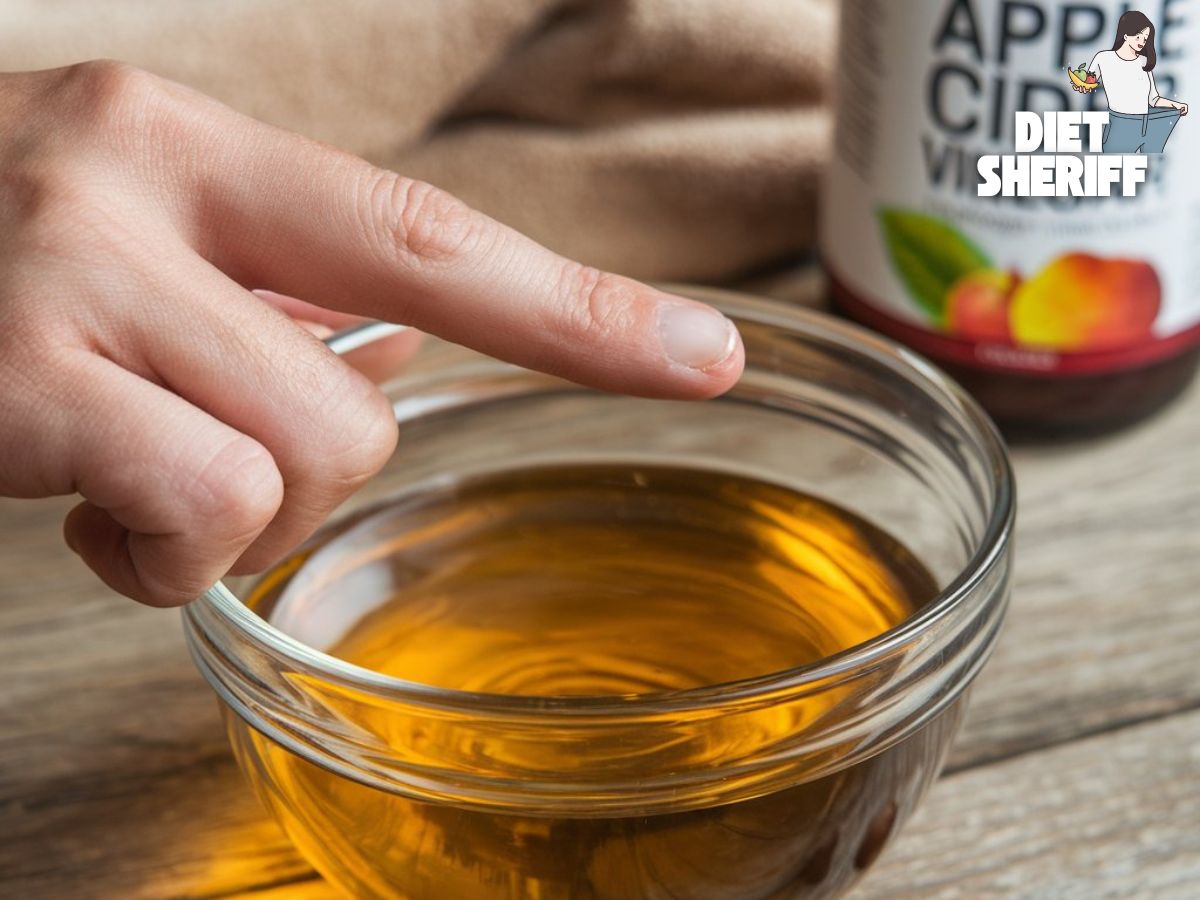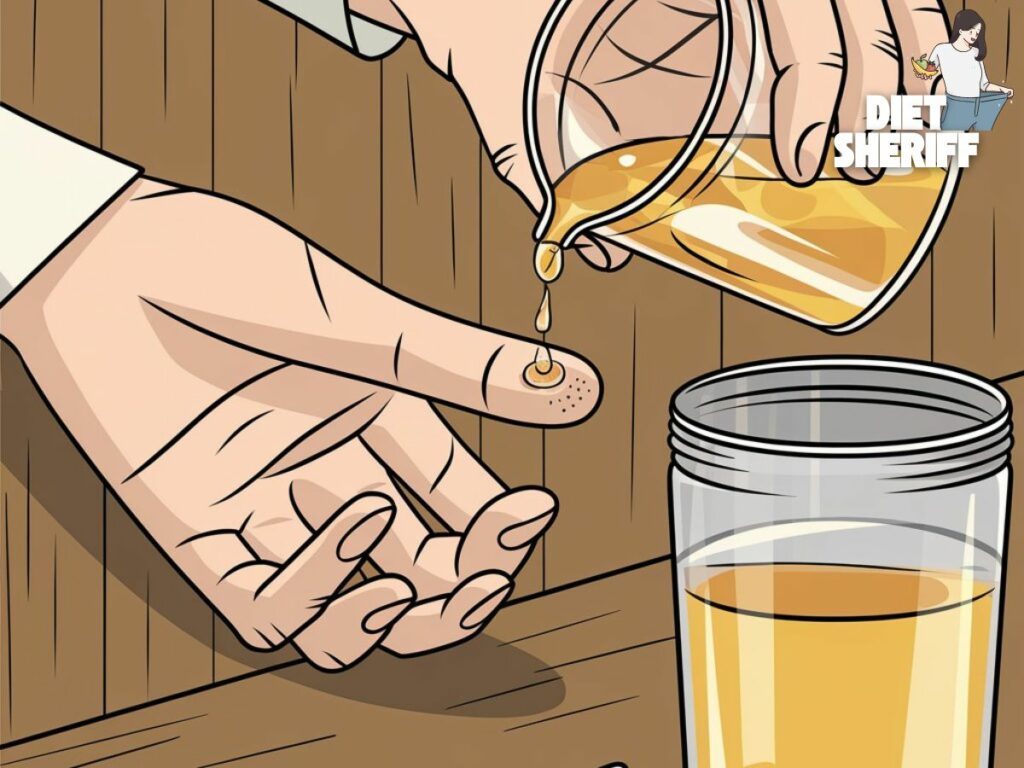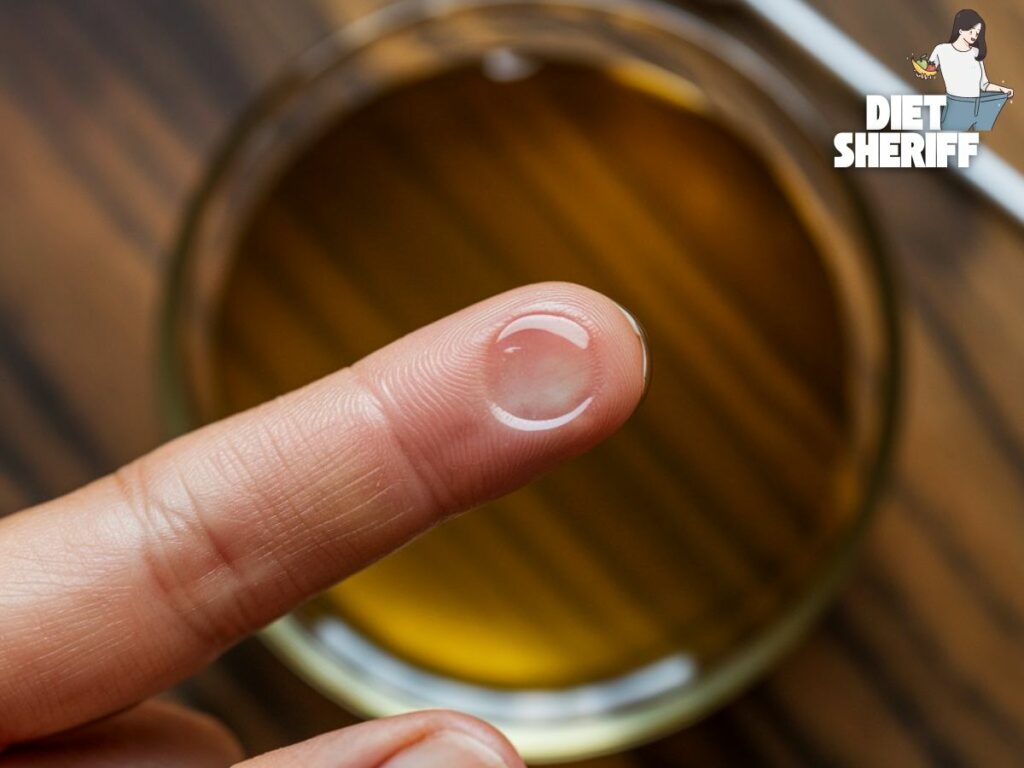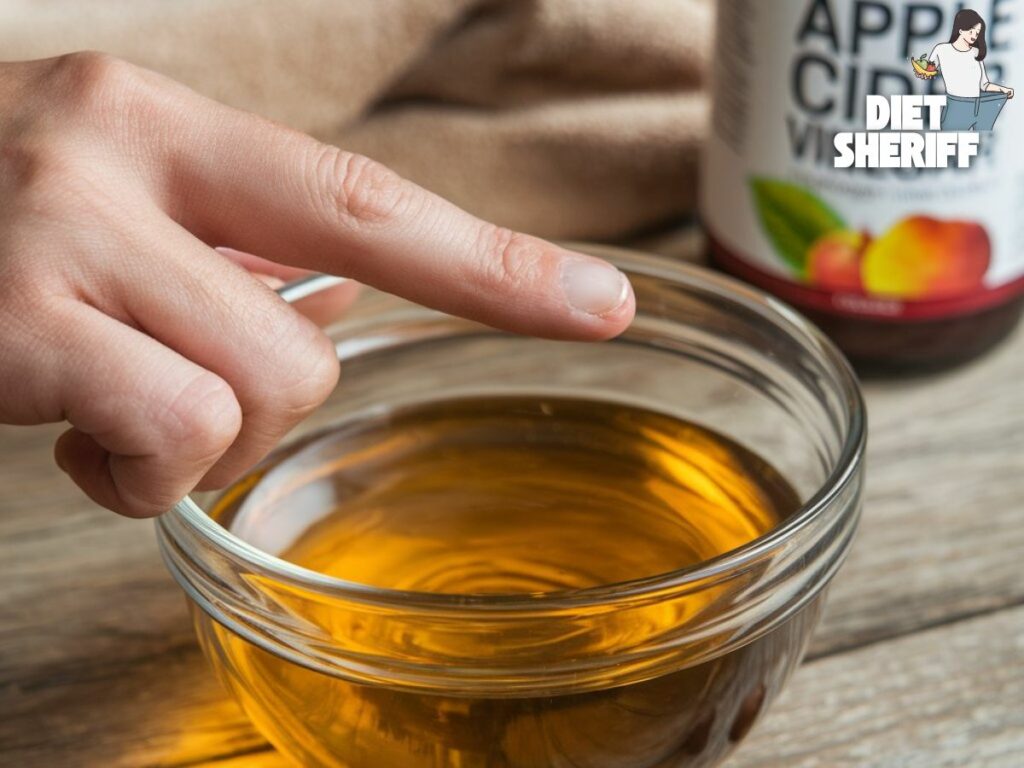Skin warts are a common problem that many people face at some point in their lives. They are small, rough growths on the skin due to the human papilloma virus (HPV).
While warts are generally harmless, they can be annoying and sometimes painful. It’s no wonder that many people look for natural remedies to remove them, with apple cider vinegar (ACV) being a popular option.
In this article, we’ll delve into how to get rid of warts with apple cider vinegar, its effectiveness, and potential side effects.

Key Takeaway
Expert Guide
Understanding Warts
Warts are benign skin growths caused by the human papillomavirus (HPV). With over 100 strains of HPV, only a few cause warts on different body parts.
Warts can appear anywhere but are most common on the hands, feet, and face. Some warts may disappear on their own, while others persist and need treatment.
HPV enters the body through tiny cuts or abrasions, triggering rapid cell growth on the outer skin layer, forming a wart.
Warts spread through direct contact with the wart or by touching objects that have come into contact with it, like towels or razors.
Related Articles: Can You Take Apple Cider Vinegar with Medication?

Warts can be of various types, including:
Common Warts: Found on fingers and hands, these feel like rough bumps and may have black dots resembling seeds.
Plantar Warts: These warts form on the soles of your feet and can grow large, causing pain when you walk or stand.
Flat Warts: Smaller and smoother than other types, flat warts can appear anywhere and often grow in clusters of 20 to 100.
Filiform Warts: Long, thin warts that often develop on the face, especially around the mouth, eyes, and nose.
Periungual Warts: Found around fingernails and toenails, these can be painful and difficult to treat.
Genital Warts: Affect the genital and anal areas; genital warts are a sexually transmitted infection (STI) passed through skin-to-skin contact. They appear as small, firm nodules with rough surfaces.
Related Articles: Which Apple Cider Vinegar for Weight Loss?
Focal Epithelial Hyperplasia (Heck’s Disease): A rare condition where soft, whitish to mucosal-coloured warts develop inside the mouth.
How Does Apple Cider Vinegar Treat Warts?
Apple cider vinegar (ACV) has long been a versatile natural remedy, addressing everything from stomach aches to diabetes symptoms.
One of its popular uses is for treating warts, thanks to its main ingredient, acetic acid, which boasts antimicrobial properties.
This acid is believed to help eliminate certain bacteria and viruses, making it a potential solution for warts.
The acidic nature of ACV could be responsible for disrupting the growth and spread of the virus that causes warts.

When applied to the affected area, it may help break down the wart tissue, causing it to gradually peel away and reveal healthy skin underneath.
Additionally, the vinegar causes irritation that might stimulate the immune system to fight off the wart-causing virus more effectively.
However, while many people report success with ACV, scientific research doesn’t fully support these claims.
Related Articles: How Does Apple Cider Vinegar Works?
Studies haven’t confirmed that apple cider vinegar is a reliable treatment for warts, whether applied directly to the skin or taken internally.
So, while it might work for some, it’s important to approach this remedy with caution and consider consulting a healthcare professional for advice.
How To Get Rid Of Warts With Apple Cider Vinegar?
Apple cider vinegar is a popular natural remedy for warts, and using it is pretty straightforward.
What You’ll Need:
- Cotton balls or pads
- A small bowl
- Water
- Apple cider vinegar
- Duct tape or a bandage
Step-by-Step Guide:
- In a small bowl, combine two parts apple cider vinegar with one part water.
- Soak a cotton ball or pad in the vinegar solution, then gently squeeze out any excess liquid.
- Place the soaked cotton directly on the wart.
- Use duct tape or a bandage to hold the cotton ball in place, leaving it on for several hours or overnight.
- Discard the cotton ball and bandage when you wake up. If you notice any irritation, remove the cotton ball earlier.
- Continue this process each day until the wart darkens and eventually falls off. This may take a few days to a couple of weeks.

Related Articles: What Are Apple Cider Vinegar Supplements Good For?
Alternative Method for Hands or Feet:
If the wart is on your hand or foot, you can try soaking the affected area:
- Mix equal amounts of apple cider vinegar and water in a large bucket container.
- Submerge the wart in the solution for about 15 minutes daily.
- After soaking, rinse your skin with water.
Safety Considerations When Using Apple Cider Vinegar on Warts
Apple cider vinegar (ACV) is a well-known natural remedy for warts, primarily due to its acetic acid content, which ranges from 4% to 8%. Despite being a weak acid, improper use of ACV can lead to chemical burns.
Documented cases include a 14-year-old girl and an 8-year-old boy who suffered burns when applied directly to the skin and covered with a bandage.
Like any natural remedy, ACV can cause allergic reactions. Symptoms include difficulty breathing, rashes or hives, dizziness, and a rapid heartbeat. Mild irritation or a burning sensation is common when using ACV on warts.
If the burning intensifies, remove the cotton ball immediately and rinse the area with water. To reduce the risk of burns, always dilute ACV with water before applying it to your skin.
Do not use ACV on open cuts, sores, or wounds, as its acidity can cause significant pain and may worsen the condition.
Additionally, avoid using ACV for treating genital warts, as it can cause more harm than good.
If you have multiple warts, painful warts, or warts that don’t respond to home treatment, consult a healthcare professional.
They can recommend alternative treatments like cryotherapy, salicylic acid, or laser therapy, which might be more effective and safer for your specific condition.
Explore Also:
Creativehouseblog
Gigasecurehome
Mycleanseplan
FAQs Of How to get rid of warts with apple cider vinegar?
How long does it take for a wart to fall off using ACV?
Using apple cider vinegar to remove a wart can take anywhere from a few days to a couple of weeks. You’ll likely notice the wart turning black before it falls off, indicating that the skin cells are dying.
Is there any side effect of using apple cider vinegar on warts?
Yes, there are potential side effects. Apple cider vinegar is acidic and can cause skin irritation, burns, or damage if not used properly. To minimize these risks, dilute the vinegar with water and monitor your skin for any adverse reactions.
Can I use ACV on all types of warts?
Avoid using apple cider vinegar on warts in sensitive places, such as the genitals. They are generally applicable for common warts on the hands and feet.






